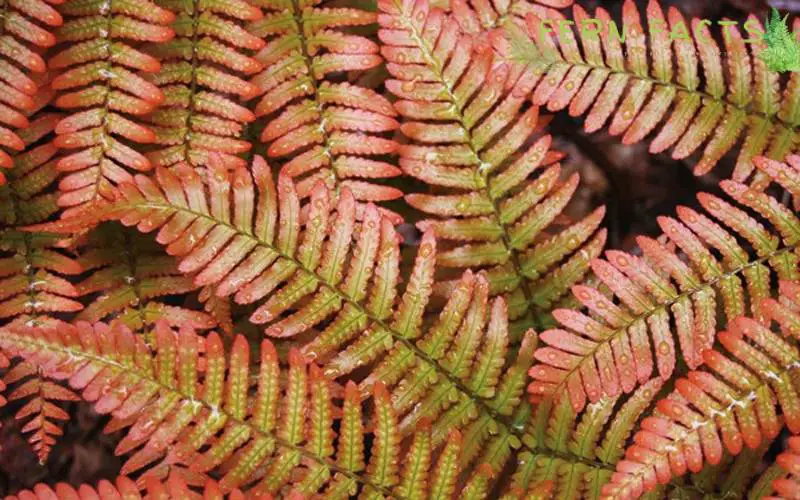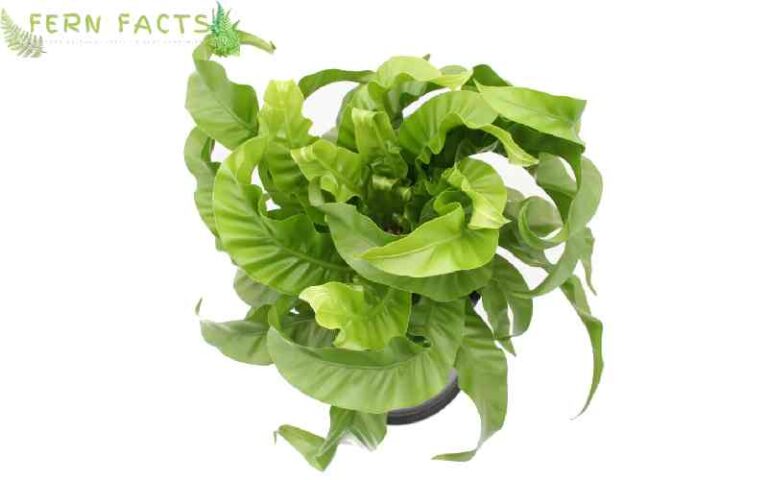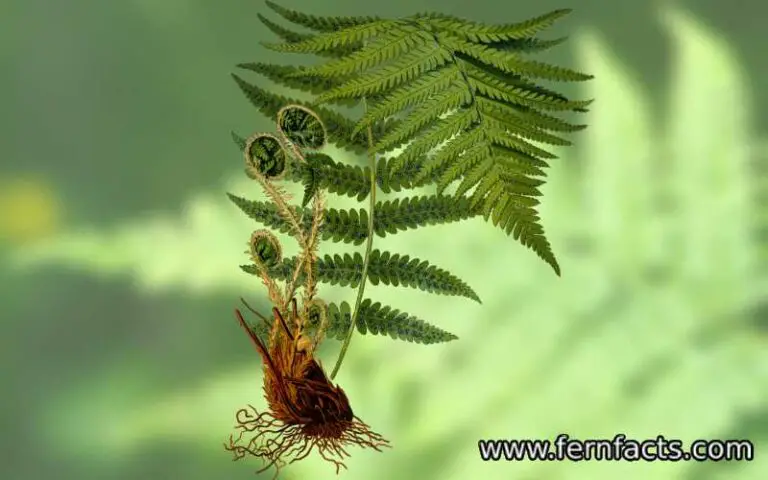Autumn Fern: Complete Guide
Ferns are always easy growing plants to grow and plant. If you are wondering about having colored foliage ferns which will change your garden’s look in different seasons, then you can rely on autumn ferns.
Autumn ferns are the colored foliage ferns that have seasonal coloration during their growing phase from copper reddish to dark green. This plant’s overall color transformation will bloom your garden’s appearance.
Therefore, in this article, I’ll give a complete guide about these autumn ferns which will enlighten you about their all characteristics so that you can grow these plants at your house.
Additionally, I’ll give growing and maintenance tips so that you can have healthy autumn ferns at your house. So let’s begin the process.
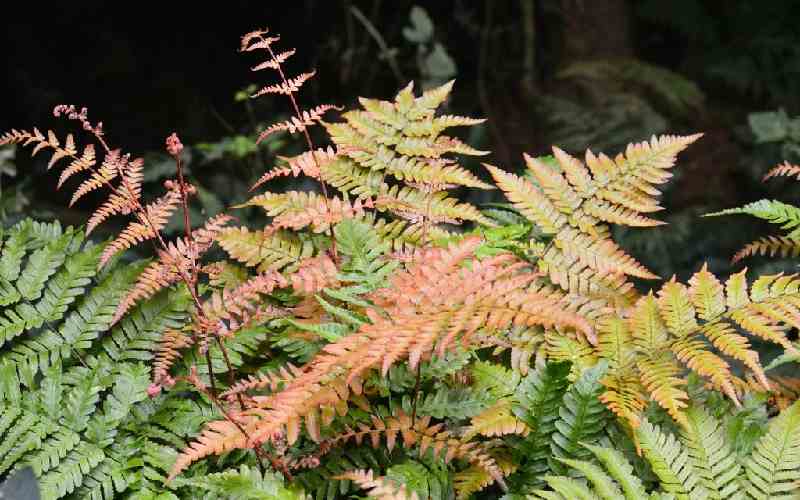
Overview of Autumn Fern
- Botanic name: Dryopteris erythrosora
- Common names: Japanese shield fern, autumn fern, wood fern, copper shield fern
- Family: Dryopteridaceae
- Genus: Dryopteris
- Plant: herbaceous perennial
- Native range: east Asia
- Height: around 18 to 24 inches
- Weight: around 18 to 24 inches
- Shade: partial to full shade
- Soil: clay, chalk, sand, well-drained, moist
- Soil ph: acidic, alkaline, neutral
- Hardiness zone: 5,6,7,8,9
Autumn Fern is one of the shade-loving ferns that will make your garden’s yard look stunning with their seasonal foliage. Because of its seasonal changes, these ferns will appear in different colors in different seasons. That’s why these ferns will be a great option for your room or your garden land.
All About Autumn Ferns
Autumn ferns are semi-evergreen ferns with a vibrant seasonal coloration while growing. These ferns’ leaves or fronds are funnel-shaped whereas the top one has a leathery shine on it.
Throughout the journey of being young to mature plants, their foliage color changes. When the plant is young, the fronds have copper tint.
Later when the plants become mature, their fronds transform into a dark green color. Ultimately, in the spring season, this fern’s fronds have bright coppery red or orangish red color.
Gradually the seasons change, and its fronds transform from bright glossy green color to dark green. Interestingly, these fern’s spores are slightly kidney shaped become ripe in between the summer and autumn seasons.
These autumn ferns are native to East Asia countries like China, Japan, the Philippines, etc. Additionally, their natural habitats are woodlands, shady places, low mountains, or hills. As they prefer low-shaded places, therefore they require moist acidic soil with indirect sunlight to thrive.
Autumn Fern Care and Maintenance
Most of the ferns need low maintenance and care to grow and thrive, unlike some invasive ferns. Autumn ferns are also low-spreading ferns with easy maintenance. Here are some tips and suggestions to care for and grow your autumn ferns at your home.
Light Conditions
Autumn ferns need shady places or sheltered areas so that direct sunlight doesn’t fall on them. Basically, direct sun rays or sunlight can sunburn their beautiful colored foliage.
That’s why you need to place your plants in such areas so that they get indirect brightness of the sun, not direct sun exposure.
Soil
As these autumn ferns prefer woodlands and moist areas for their habitats, that’s why they prefer similar types of soil in their garden land or pot.
Try to take the acidic soil under a pH of 6.0. Later mix the organic matter to enrich the quality of the soil which will provide nutrients to the plants.
Additionally, use good drainage soil so that the soil can retain the moisture in it by draining the extra water.
Water
After you establish your ferns in the first growing season, try to water them consistently until the first rain comes. During the monsoon days, water is not that much required.
Again in the dry seasons, water the plants while maintaining the moisture in the soil. Similarly, for your container ferns, try to water them regularly during the hot or warm weather.
Make sure you keep the moisture in the soil but don’t soak the plant in water.
Temperatures and Humidity
Autumn ferns can be planted in a widely charged climate range. These plants have the tolerant nature of both warm season and cold-freezing seasons.
However, these plants become vulnerable during dry cold winds and their soil gets parched. Similarly, below 5 to 6 USDA zones, these plants might die and bounce back in the spring seasons again with new foliage.
Fertilizer
Autumn fern needs seasonal feeding so that it can get nutrients to thrive and bloom. Therefore, you need to feed them during the springtime.
For making their fertilizer, you can mix organic matter or you can buy any storehouse fertilizer which will complete all-purpose nutrient deficiencies in it. If your ferns are in the pot, you have to feed them often.
Try to feed them during their growing seasons. And so, you can also feed them once a month in that season which will help your ferns to grow actively.
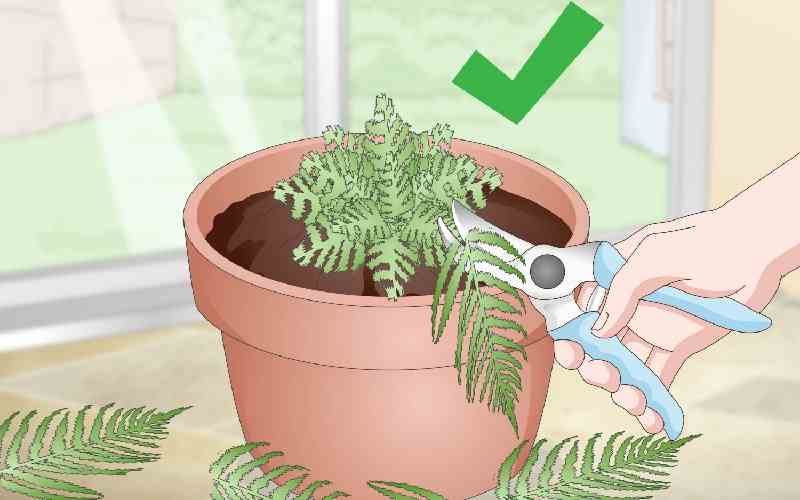
How to Prune Autumn Ferns
Well, autumn ferns don’t require much pruning and trimming. If the fords of the plants become old over the winter period, try to leave them on the plant.
When they die down during the early spring seasons, just pluck off the old dead fronds from the plants. This will give your ferns a new fresh look before their upcoming growing spring seasons.
And so, it will also give an extra boost to your plants in their active growing. But make sure, you don’t pluck off any new, fresh fronds; this can harm your plant’s growth.
How to Do Propagation of Autumn Ferns
Propagation will help you to have new plants of these species at your house. Therefore, by healthy propagation guidelines, you will be able to have numerous collections of these autumn ferns.
You can do their propagation by two methods; the first one is by root division and the second one is by spores.
Root Division Method
In the spring season, when you notice new fronds, you can do this root division process because it’s their growing season. So at first, you have to dig the whole plant from the pot or from the ground with their entire roots.
Make sure you wear gloves before digging or pulling out the plants; this will save you from any injuries. Later dust off the soil from the plants. Then divide the plants by their roots with your pruning tools.
You need to ensure each segment has the same sort of roots. Then replant each segment into a pot or a container or in your garden land. Beforehand, try to mix the soil with all the organic matter which will automatically boost your plants’ growth.
After replanting the ferns, try to locate your potted ferns in a partially shaded place. Lastly, water them thoroughly so that they can get enough moisture and hydration.
Spores Collection Method
In this process, you have to wait until your plants become mature or adult. Then you have to ensure whether their spores are ripe or not. You can understand by the color of their spores, if it’s dark and starts falling off from the fronds that means it’s ready to use.
At first mix a container with soil and organic matter. Then, use any white paper to collect the spores from the fronds. For collecting the spores, you can just tap or flick the fronds with your finger slightly and let the spores fall onto your paper slowly.
You Need to make sure the spores don’t get direct sunlight because it can burn the spores. Therefore, cover the spores with plastic wrap which will maintain the hydration and save the spores from the outer environment as well.
Keep watering the container before it starts to grow. Usually, it will take 6 to 12 weeks time to grow so at that time hold your patient and gently supervise the spores. After a few weeks, you will observe small heart-shaped shoots on the soil surface which is called prothalli.
Then you can gently remove the plants and replant them in any individual pot or container. Once it’s being planted, follow the upper guidelines to have healthy bushy ferns.
- Find Out More About Caring for and Cultivating Crispy Wave Ferns.
How to Do Potting and Repotting Autumn Ferns
Autumn ferns can be grown in pots, containers on the balcony, or any other place in the house. In order to repot your autumn fern, at first select any new pot or container.
Try to select a pot or container with a deeper size at least 2 inches bigger than the previous one. And so, the pot should be tall and wide so that the plants can get enough space to accommodate them.
Later on, fill the pot with your new rich soil, organic compost, and matter. Then repot your ferns in the new container. Try to ensure all roots are equally placed inside the container.
Then water the plants thoroughly in order to keep the soil moist. Especially, if you place your plants outdoors, then you have to water them consistently.
Don’t let their soil dry out often which can kill your plants. You can do reporting on a yearly basis if you observe the ants become rootbound.
Overwinter Care of Autumn Ferns
For your outdoor garden plants, they don’t need much protection from the winter. However, for your container pots, you have to give some extra care during winter.
There will be no use in bringing the container inside, rather you have to develop the richness of the soil in the cold weather. You can use a larger pot, container, or box and fill it with sand.
Alternatively, you can also wrap the container with bubble wrap or burlap, or plastic wrap which will provide extra warmth to the plants.
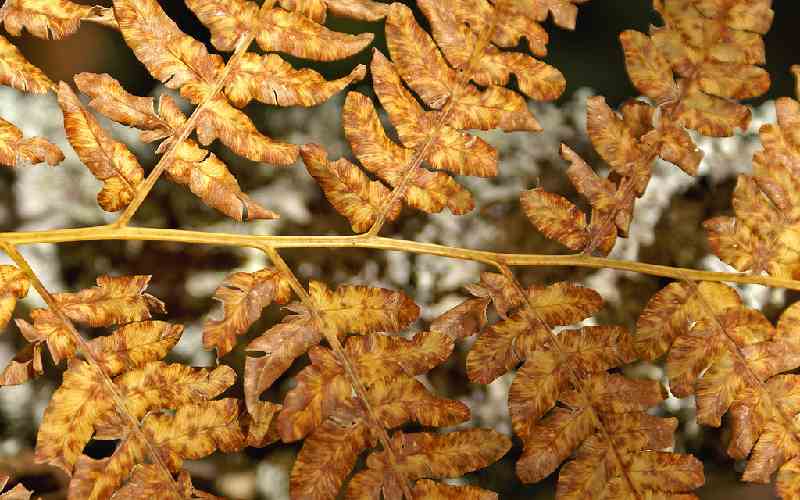
Common Pests and Problems
Likely, other ferns, these autumn ferns also have some problems and issues. By taking care and troubleshooting you can have thriving autumn plants in your compartment.
Pests Problems
Autumn ferns can easily get attacked by mealybugs, scales, and aphid Bugs. These are some rare pests that will affect your plant’s health. Other than that, these ferns are not sensitive to other issues.
Common Problems
These autumn ferns are very sensitive to direct sun exposure. That’s why direct sunlight can easily burn out their fronds which can cause your autumn ferns to have brown, discolored fronds.
This problem can happen within a few hours if they anyhow get exposed to direct sunlight. Therefore, you need to give them a shaded or fully shaded place.
Final Thought
In final thought, autumn ferns are one the colored ferns among others that have seasonal coloration during their growing phase.
Their seasonal coloration will change your garden’s appearance differently. With the above-mentioned steps, guidelines, proper care, and maintenance you can easily grow and plant these autumn ferns at your house.
And so, you can establish wildlife around your garden through these ferns.
Frequently Asked Questions (FAQ)
Can autumn ferns take full sunlight?
No, they need partial to fully shaded. They don’t tolerate the direct rays of the sun.
Are autumn ferns true ferns?
As they can regenerate via spores which means they are true ferns.
Are autumn ferns evergreen plants?
No, they are Semi-evergreen plants. They will die in the winter and bounce back again in the spring seasons.
Do they like humid atmospheres?
Yes, they do like the humid environment around them.
Do they tolerate drought?
Yes, they can tolerate drought but not for too long as they are fond of moist soil and a humid environment.

